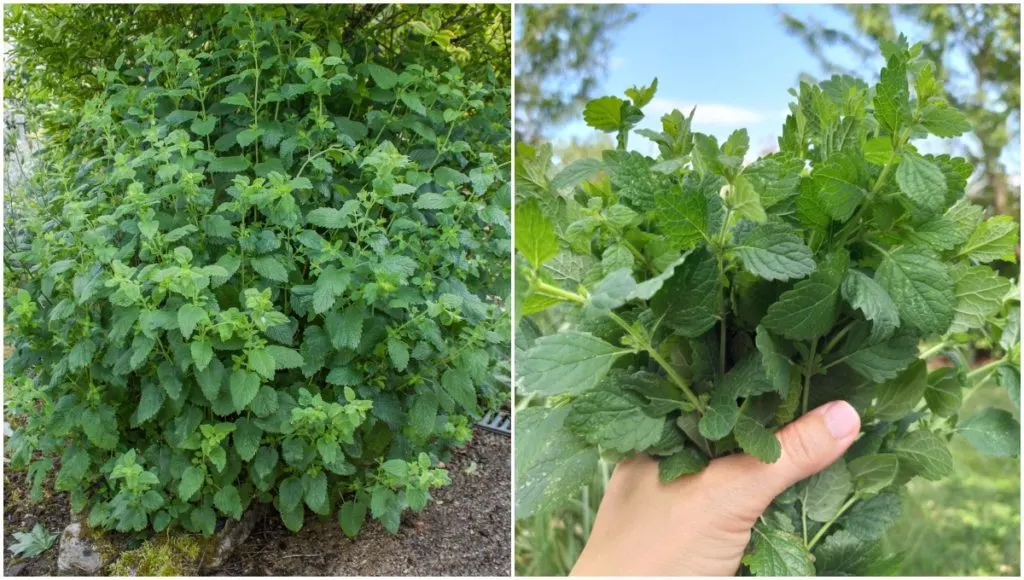
Once dubbed the “elixir of life”, lemon balm (Melissa officinalis) is an ancient herb from the mint family that has been used as a medicine, and as a flavoring for food and drinks, for over 2,000 years.
Lemon balm is native to southern Europe, but is now naturalized in the Americas and beyond.
Named for the lemony scent that exudes from its foliage, it’s an incredibly worthwhile plant to grow in the garden.
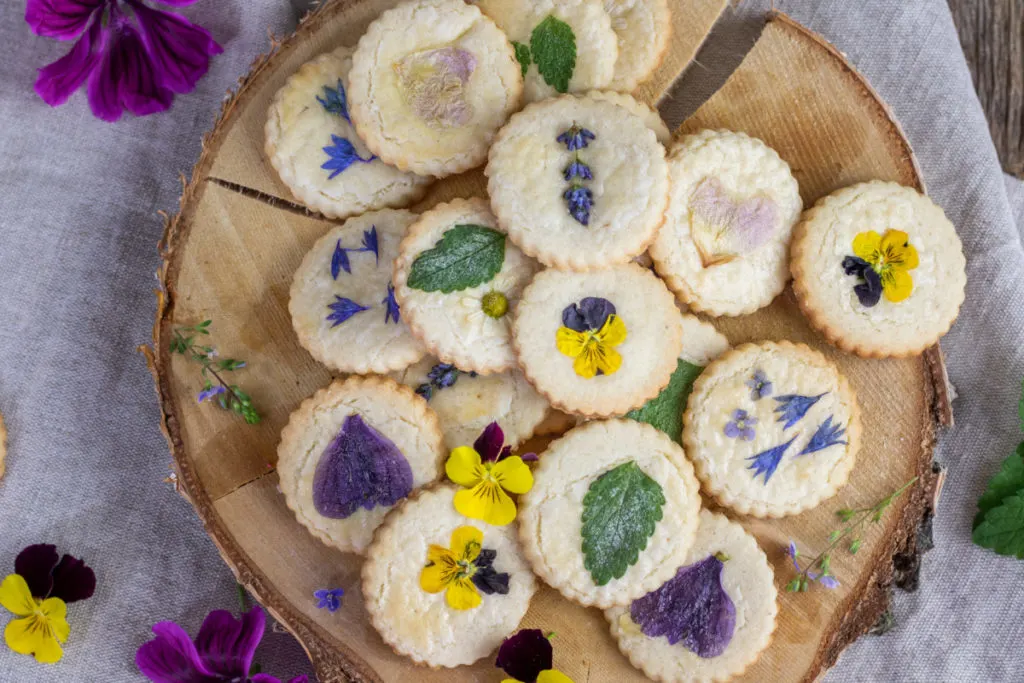
About the Lemon Balm Plant:
A hardy and non-fussy plant, lemon balm is a bushy perennial herb that rises to a height of two feet. It produces pairs of wrinkled, serrate, 3-inch long oval leaves in medium green along squarish stems.
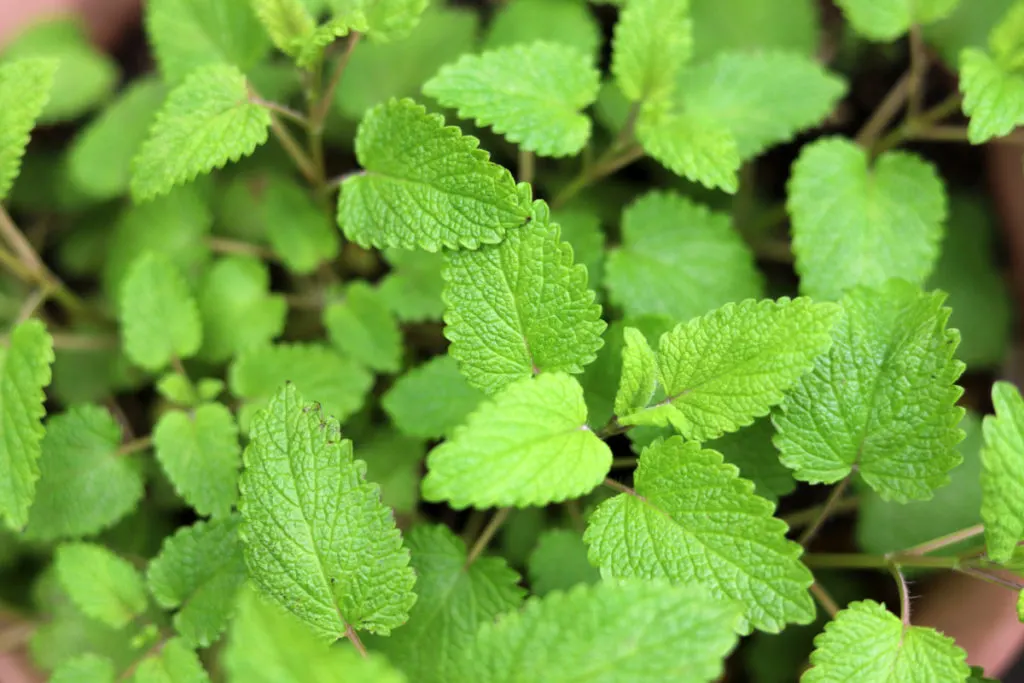
From June to August, teeny tiny white flowers bloom on the upper part of each leaf pair, inconspicuous to us but much beloved by honeybees and other pollinators.
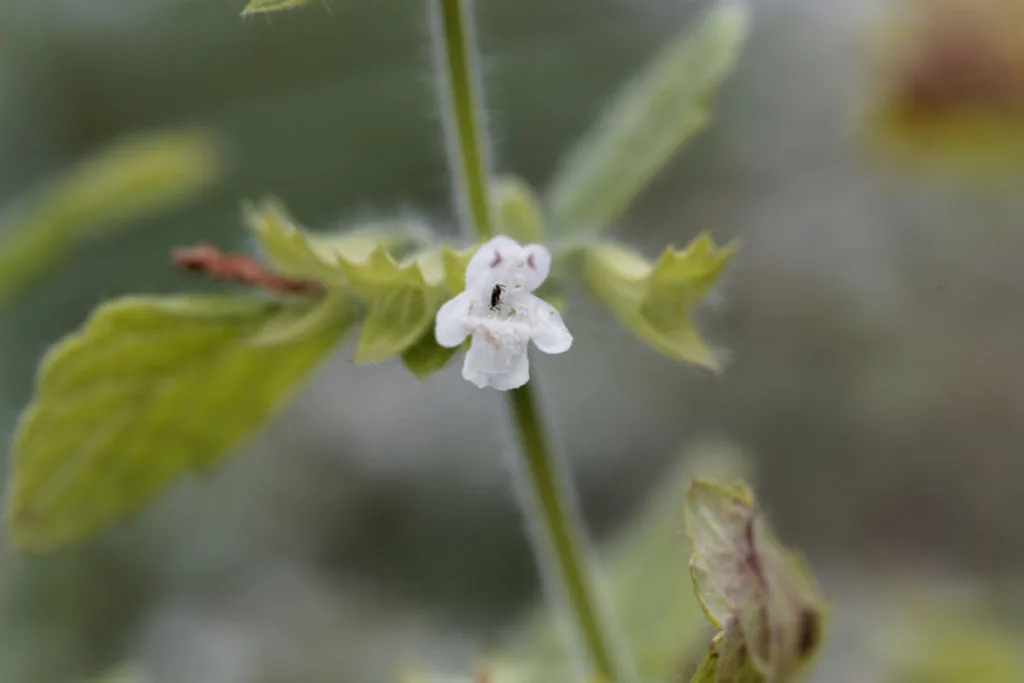
Quickly forming dense colonies, lemon balm self-propagates via root and seed. Regular pruning is necessary to encourage the growth of new, fragrant leaves, minimize spread, and keep the plants from appearing weedy.
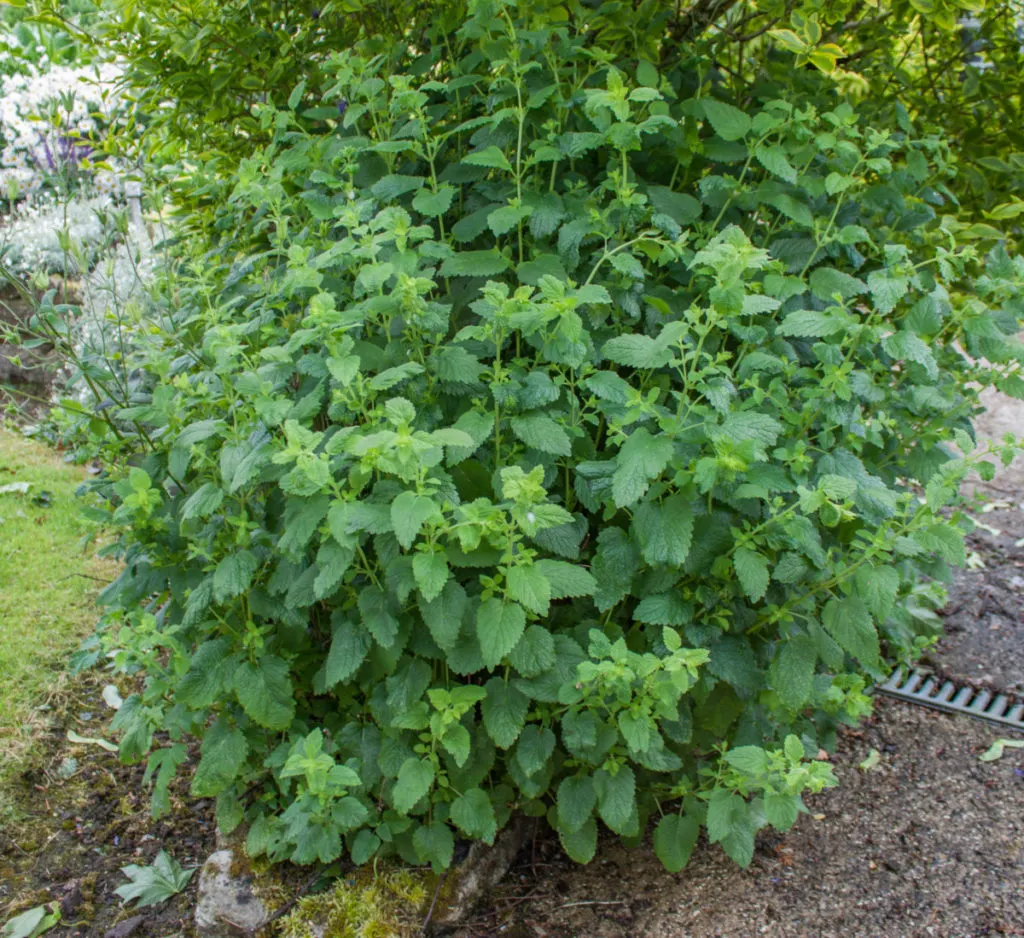
Lemon balm makes for an attractive ground cover, and since it adapts well to partial shade, and can be planted beneath shrubs and bushes to help suppress weeds.
In the vegetable patch, it makes good companions with several types of food crops, boosting yields while repelling pests.
It’s an essential member of any herbal garden, growing robustly in pots that can be set around your patio and other outdoor gathering spots to keep mosquitoes and other annoying insects at bay.
Lemon Balm Growing Conditions:
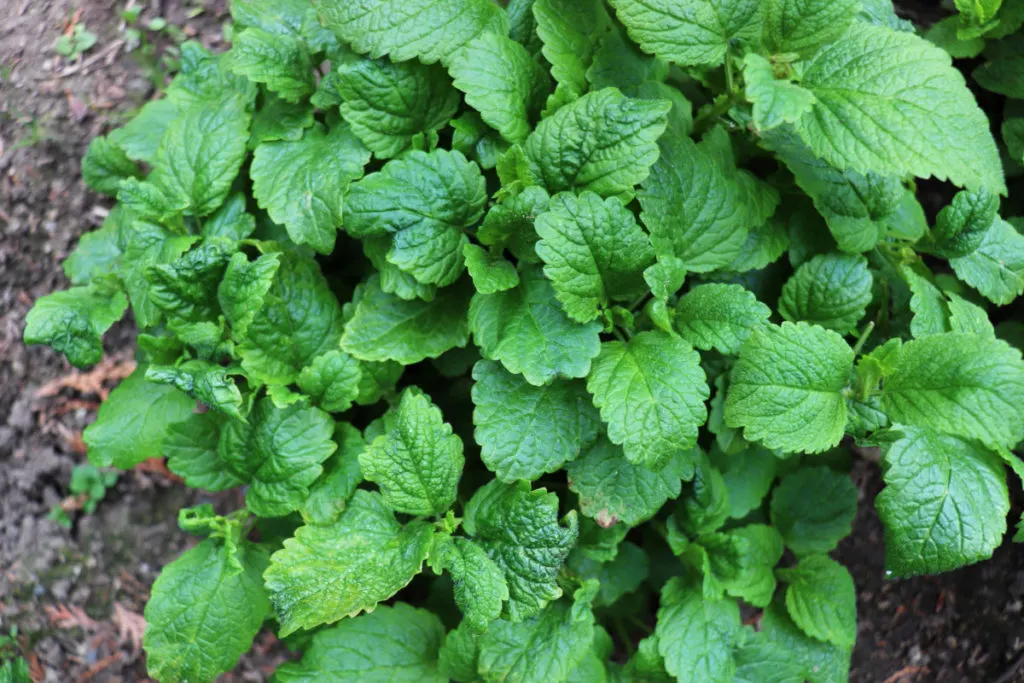
Hardiness
Lemon balm is hardy in USDA zones 5 and above.
Light Requirements
Plant lemon balm in a spot that receives full to partial sun. In northern regions, it will do well in full sun, but in the hotter climates of the south, lemon balm should be planted in a spot that receives some afternoon shade.
Soil
Though it is adaptable to poor soil, lemon balm prefers to grow in a moist, fertile, well drained, and cooler spot in the garden.
Watering
Keep lemon balm plants consistently moist.
Fertilizer
Give lemon balm plants a boost by amending the soil with finished compost.
Companion Plants
Lemon balm grows well alongside all members of the cabbage family (broccoli, cauliflower, kale, Brussels sprouts, etc.), tomatoes, melons, squash, onions, and apples.
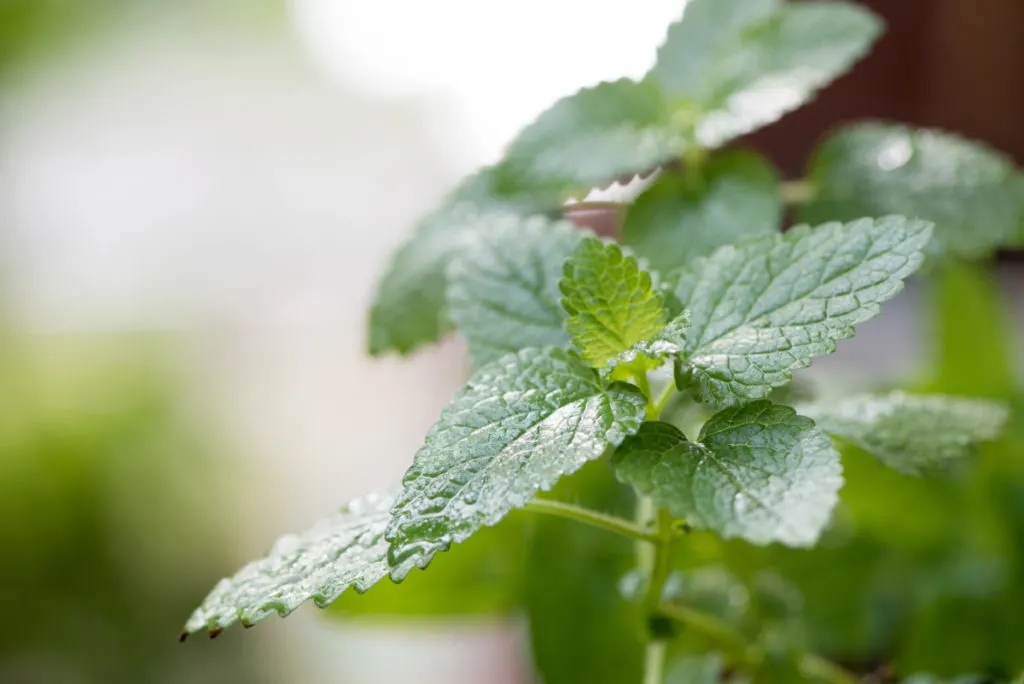
How to Grow Lemon Balm
From Seed:
Start seeds indoors 6 to 8 weeks before the last frost or sow directly in the soil from late March to mid-April.
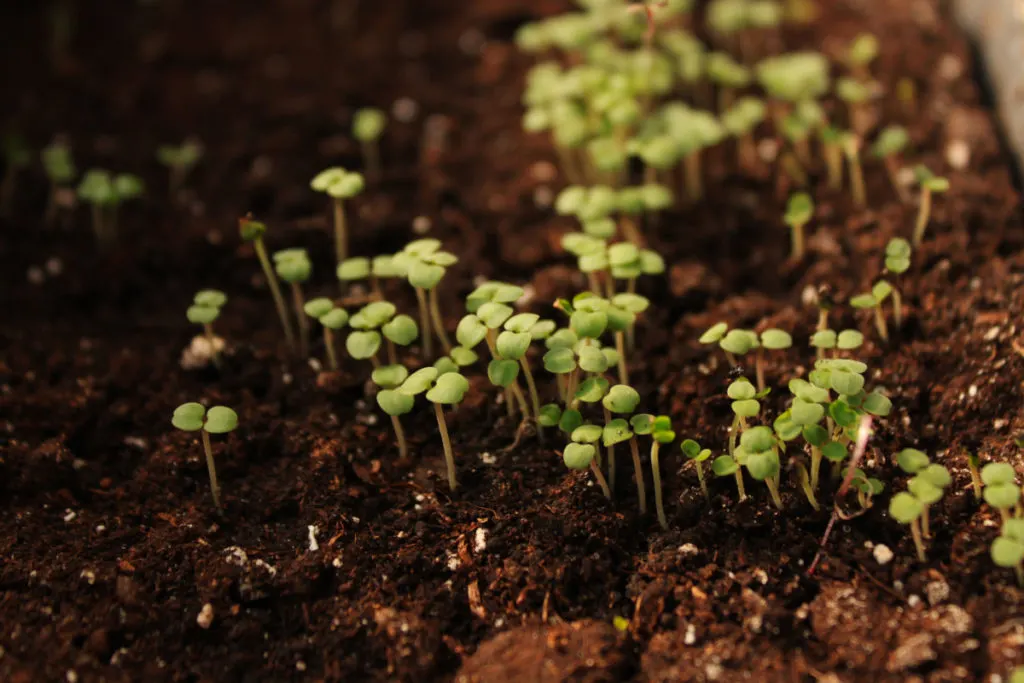
- When planting seeds, barely cover them with soil. Use a spoon to lightly dust the surface.
- Give the growing medium just enough water to prevent seeds from drying out or washing away. Mis the soil with a bottle of water to keep from disturbing the plants. If growing in starter pots, water from the bottom.
- Seeds will germinate in 2 to 3 weeks.
- Once seedlings emerge, continue to keep the soil consistently moist.
- If seeds were started indoors, allow plants to grow a few inches. Transplant them into the garden when they’re large enough to handle.
- Space transplants 18 to 24 inches apart.
- If sown directly in the garden, thin seedlings initially to 8 inches apart. After a few weeks, do a second thinning to a minimum of 18 inches apart.
From Cuttings:
Like many other types of herbs, lemon balm can be successfully propagated via cuttings.
- Snip off a 2 to 3 inch cutting with healthy looking leaves and some new growth at the tip.
- Place the cuttings in a cup of water and set it in a spot that receives indirect sunlight.
- Replace the water as needed. It can take around 6 weeks for roots to emerge from the base of the stem.
- When the lemon balm cutting has a good set of roots, plant it in nutrient-rich soil and water well.
- Keep the plant indoors for a couple more weeks before hardening it off and transplanting outdoors.
From Starter Plant
Growing lemon balm from seed or cutting takes time so if you’re short on patience, it’s often much more convenient to pick up some starter plants from your local plant nursery.
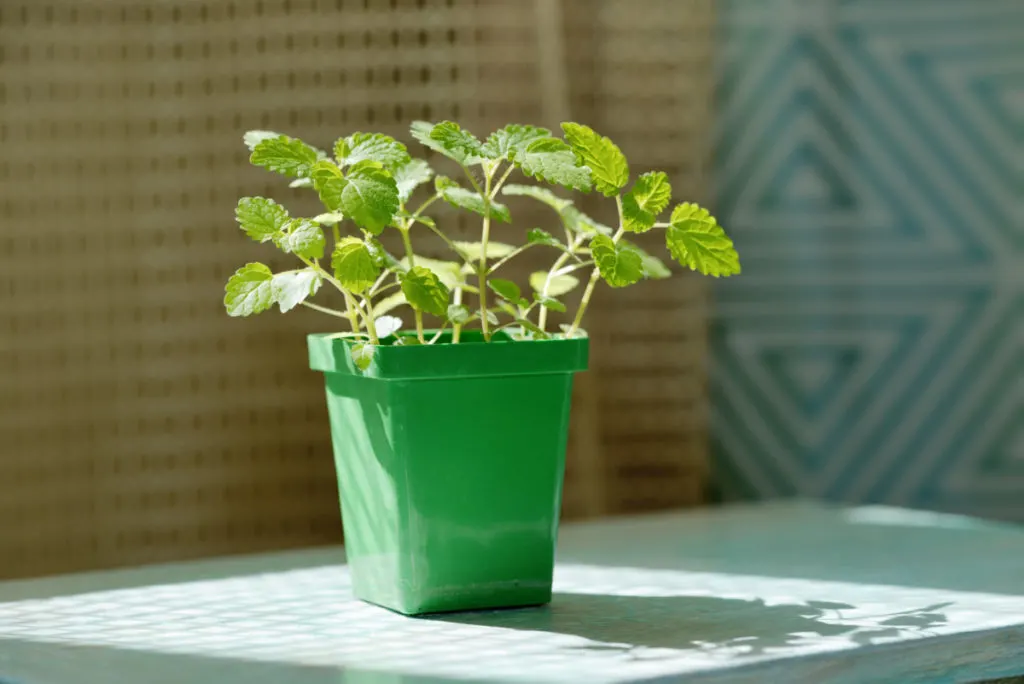
- Once the weather is mild enough to transplant outdoors, prepare the soil by loosening up the dirt at your chosen site with a shovel, to a depth of about 10 inches.
- Work some compost into the soil.
- Dig a hole slightly larger than the pot the plant came in.
- Remove the lemon balm from the container and plant it at the same depth as it was in the pot.
- Replace the soil around the roots and gently tamp it down with your hands.
- Water deeply and often during the first week or two to help its roots become established in its new home.
From Division
If you know someone who already has a thriving lemon balm plant, it’s super easy to propagate by division.
- Using a spade, shovel, or a garden fork, insert it in the soil about 4 inches into the original planting.
- Dig deep and remove a portion of the plant and roots, retaining the clump of soil it’s growing in.
- Place the root clump in a bag and add a bit of water to transport it home.
- Follow the previous steps for transplanting it in your garden.
How to Harvest Lemon Balm
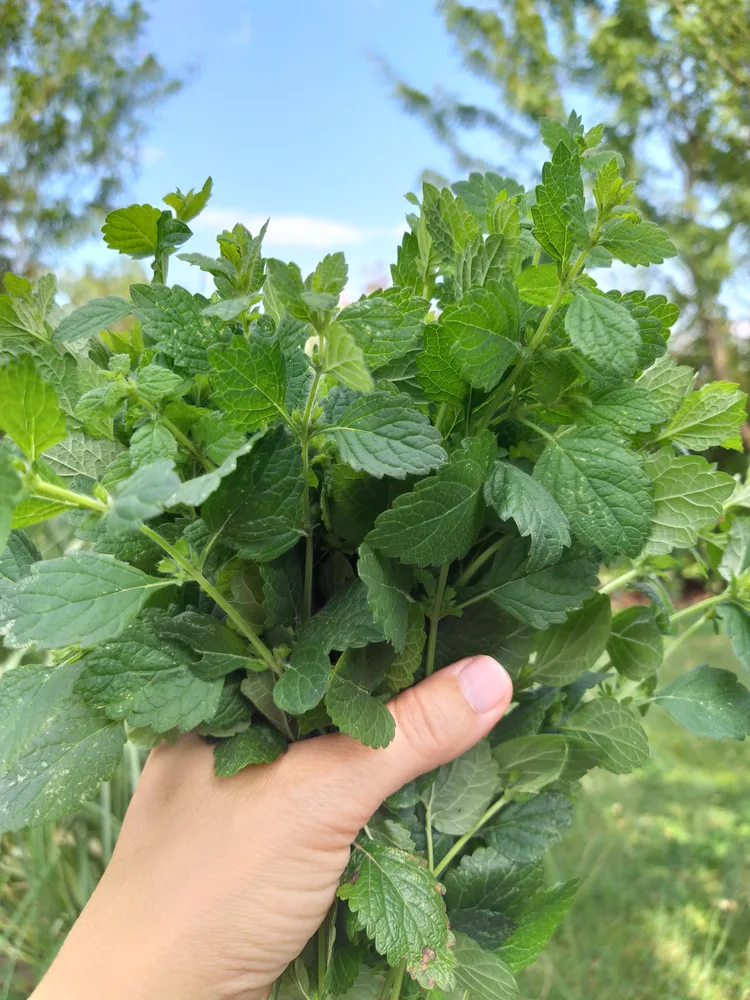
Once your lemon balm plants are established and putting out new growth, you can pick their leaves throughout the rest of the season.
To harvest, snip off a length of stem and remove the leaves. Plants will re-grow from just below where you took the cutting. Never take more than 25% of the plant’s foliage at a time to keep lemon balm healthy and productive.
Newer growth is typically more tender, fragrant, and flavorful than older leaves. Fresh leaves are best used in culinary dishes as much of their scent is lost once dried.
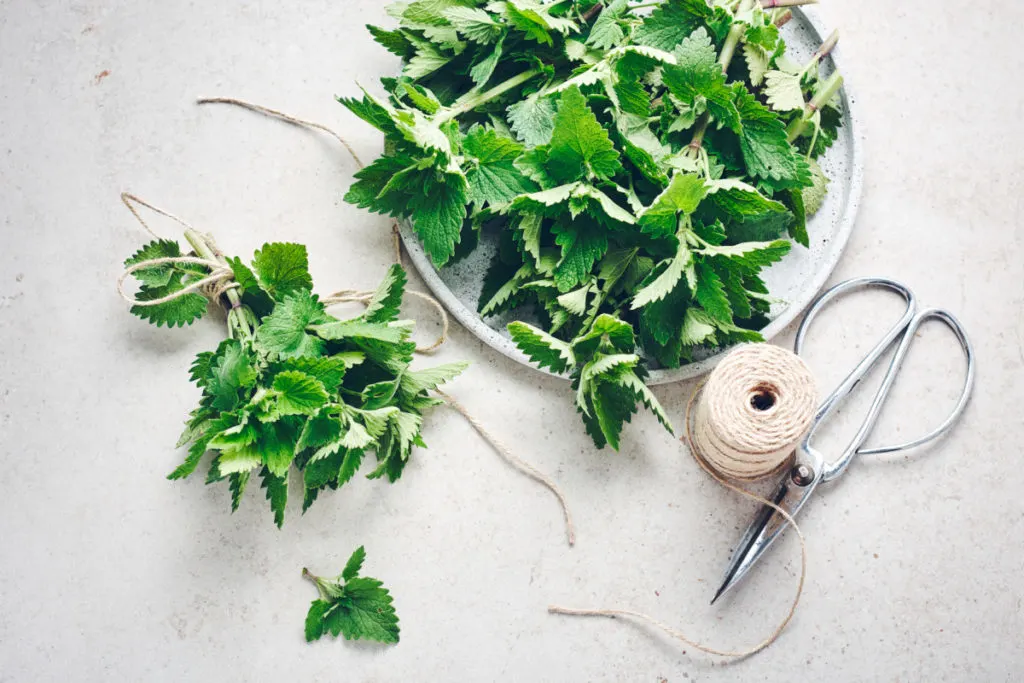
To store for later use, hang bunches of lemon balm in a warm, dark, and well-ventilated spot. Once completely dried, remove leaves and store in a tightly sealed container. Fresh leaves can also be placed in the freezer.
Seed Saving
To save lemon balm seeds, allow the plant to flower. Seed pods will emerge and the foliage will begin to dry up. When stalks are brown and appear dead, remove them from the plant.
With the stalks over a paper bag or plate, run your fingers along each stem, pinching off the foliage. The tiny black seeds will be mixed in with the dead leaves, so use a fine mesh strainer to sift the foliage out of the seeds. Repeat the sifting process a few times. Once you’re satisfied with your haul of seeds, store them in an airtight container in a cool, dry place.
Common Issues:
Invasiveness
Lemon balm self-propagates through its roots and seeds and can spread quite quickly in the garden. Prevent self-sowing by clipping flowers as they appear. Pull entire plants from the ground to reduce root spread. Or, keep your lemon balm plants in containers to limit expansion.
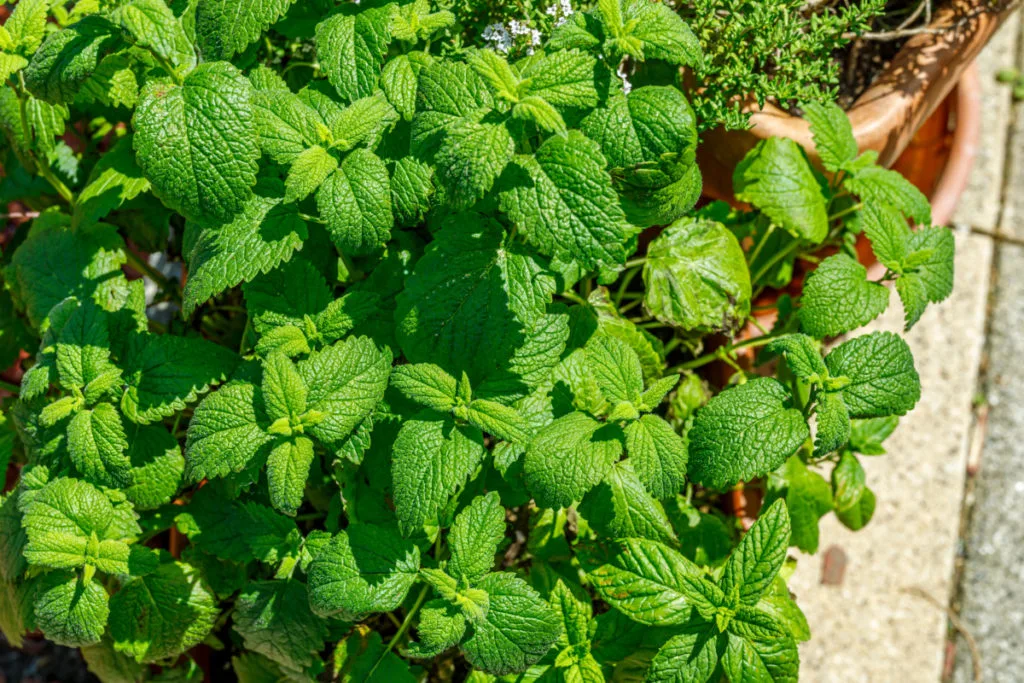
Powdery Mildew
Appearing as a white or grey powder on the leaves and stems, treat powdery mildew by removing all parts of the plant that shows this fungal infection. Be sure to wash your hands and clippers well.
Prune the plant to increase air circulation. Powdery mildew loves humidity but cannot grow when the leaves are wet so give plants a thorough spraying with plain water. In many cases, watering the entire plant from above will take care of powdery mildew.
In stubborn cases, this baking soda spray recipe is effective against mildew. It is very powerful so use caution when applying it and never spray it on plants in full sun.
For more ways to deal with powdery mildew you can check out our comprehensive guide by clicking here.
20 Ways to Use Lemon Balm
If you follow this guide, you’ll have an abundance of lemon balm in no time! Be sure to check out our next article on how to use these fragrant, lemony leaves.
Read Next: 20 Uses for Lemon Balm in the Kitchen
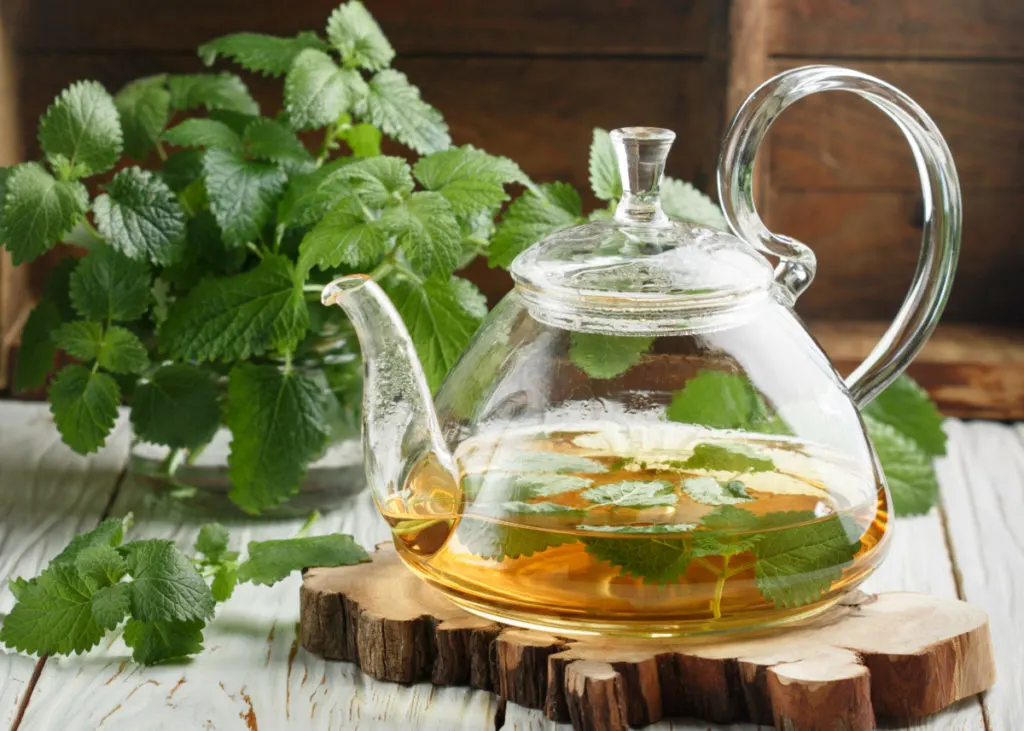

Get the famous Rural Sprout newsletter delivered to your inbox.
Including Sunday musings from our editor, Tracey, as well as “What’s Up Wednesday” our roundup of what’s in season and new article updates and alerts.

